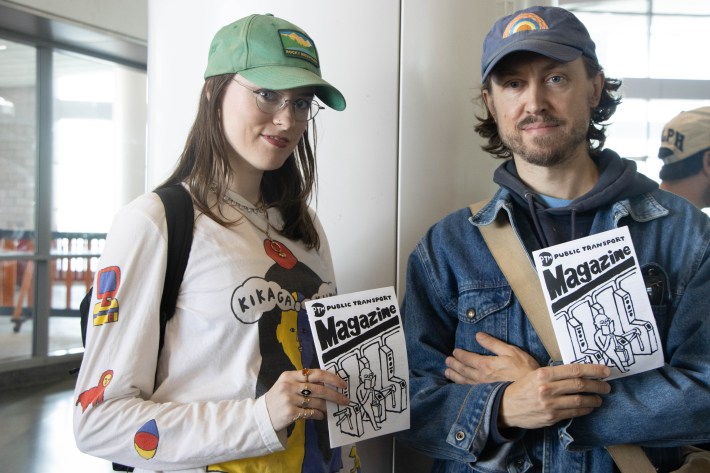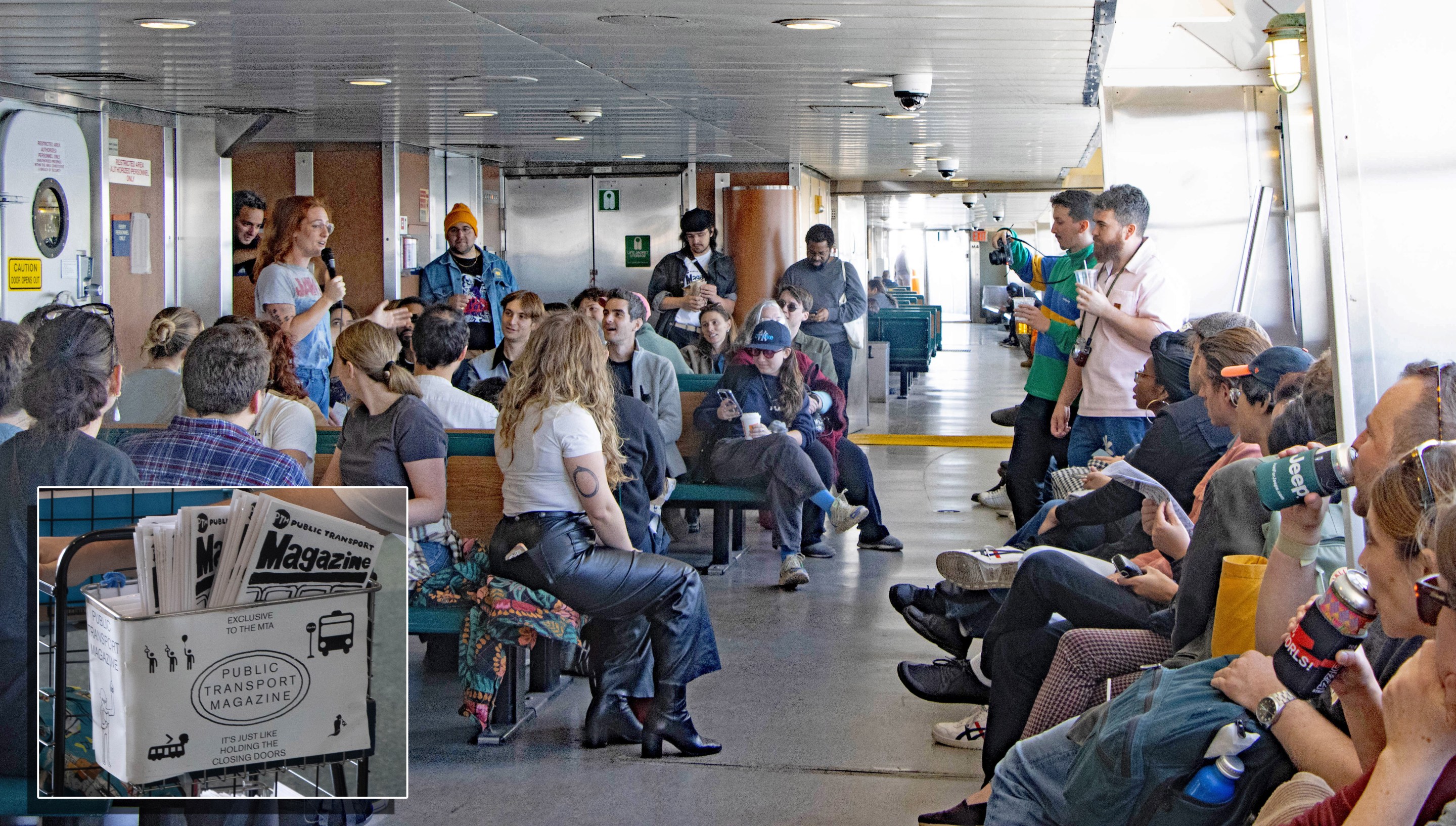The Staten Island Ferry — great for a free ride across the harbor, but a place to connect to fellow New Yorkers? Usually, not so much.
But on Saturday, the creators of Public Transport Magazine unleashed the potential as roughly five dozen people flocked to the Whitehall Terminal for live stand-up and a guerrilla-style party celebrating the comedy zine's fifth edition.
Many attendees said they not only enjoyed the show, but also a chance to connect with strangers — dispensing with the notion that we're not supposed to do that.
“There were people who were coming over and being like, ‘Oh, what is this?’ and chatting," said attendee Abby Pfeiffer who talked to “eight to 10 people” she didn’t know during the event. "Everyone was being really friendly and communal, and it was nice."
There isn't typically live comedy on public transit, but maybe there should be. After all, Americans are desperate for connection: According the Surgeon General, “one-in-two adults in America reported experiencing loneliness,” in recent years, threatening “individual and collective health and well-being.”
Al Mullen has been distributing Public Transport Magazine — known for its contributions from New Yorker cartoonists, Daily Show writers, and quirky humor wrapped in a goofily scrappy aesthetic — by tucking copies in front of subway ads on almost every ride he’s taken since 2022.

“The mission of the magazine is to puncture the banality of being on public transport and kind of bring some sort of weirdness or specialness or comedy or frivolity to a thing that you take for granted,” Mullen said.
That mission was certainly accomplished on the bottom deck of the Staten Island Ferry on Saturday, as commuters stumbled upon comedy sets and live music from contributors Meredith Dietz, Ikechukwu Ufomadu and Marc Philippe Eskenazi, who brought microphones and a portable speaker on board.

A brief nervous energy bubbled in the group as it boarded the ferry, with Mullen and multiple performers and attendees expressing a fear that the party would immediately get shut down or become a “hot mess.”
But as it became clear the group wouldn’t be stopped, incredulous excitement replaced nervousness.
“I’m all for it,” said a ferry worker said during the event. “I’m glad people are out enjoying [public transportation].”
“I go to events like this because it’s always fun to meet new people,” said Alma Hutter, a native New Yorker who was about to exchange contact information with Kelly Dinneen, a woman she just met on the ferry. “I make an effort to keep doing new things. Because if not, what’s the point of being in New York?”
Dinneen, who moved to the city a few months ago, said she participated because “it’s fun to switch up what public transportation is used for." She added that since she had enjoyed the event so much, she “might steal this idea,” and would “be looking for excuses to do something on the ferry.”
Researchers who study third spaces — public, community spaces that allow for connection — think she should.
“We're talking about a social norm," said Richard Kyte, a professor at University of Wisconsin. "You have to change it to where the expectation is we talk to each other” in order to push public transportation towards functioning more like a third space, he said.
“Talking to other people is positive, it makes you happier, makes you healthier, makes your community stronger.”
As the group waited at St. George to board the 3 p.m. ferry back to Manhattan, a lifelong Staten Island resident came across them. “I saw all these people [who] had these magazine things, and I was curious myself about what it meant,” he said. “I think it's cool. I didn't expect to find this here.”
He was one of at least 100 people who took a zine or engaged with the event over the course of its two hours.

“I think we need more [things like this on public transit],” added Adam Davis, an event attendee. “It’s often such a slog or schlep of an experience and this just brings so much joy.”






